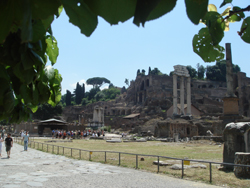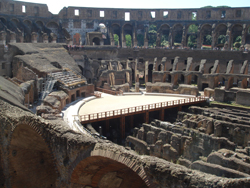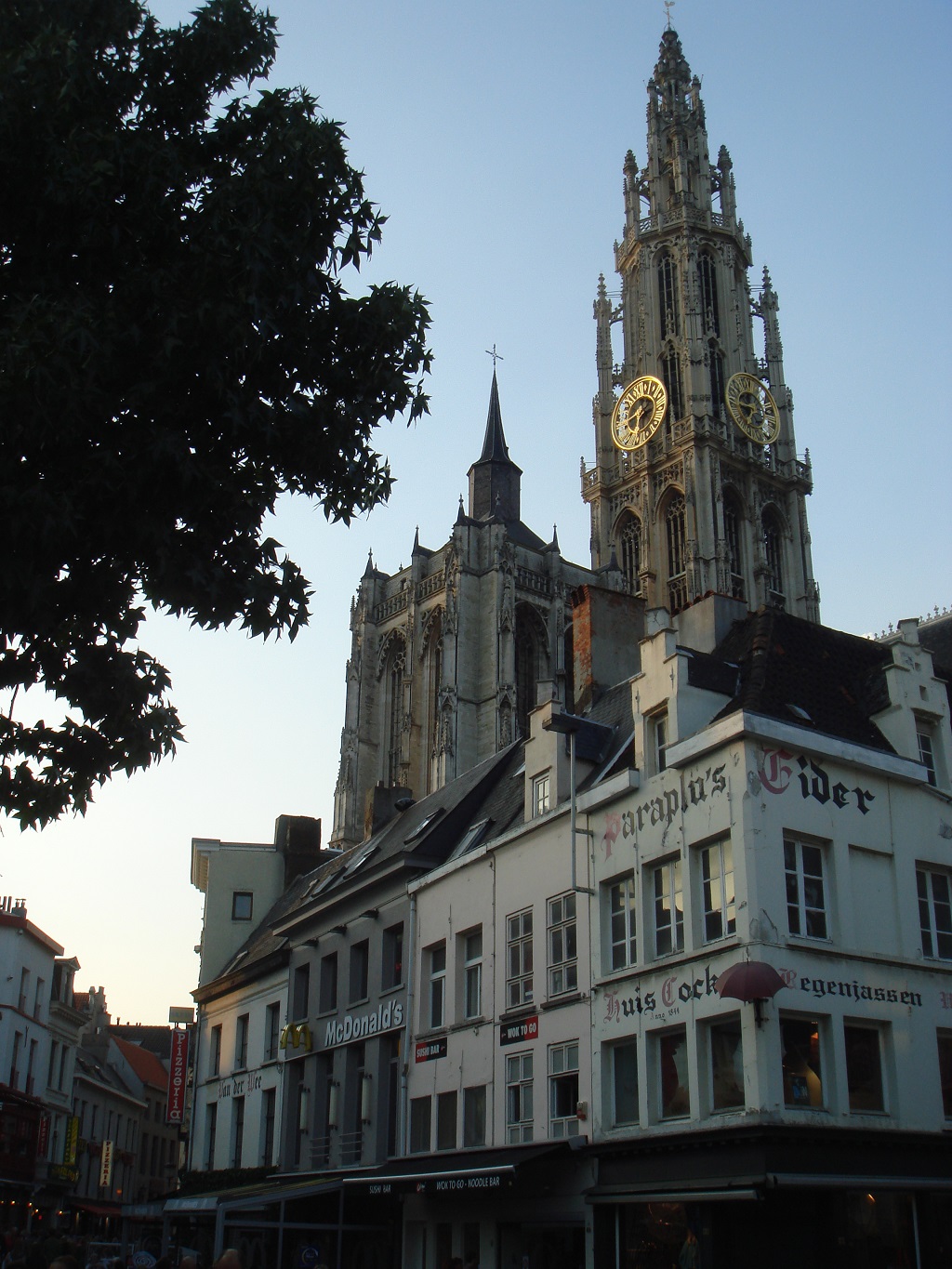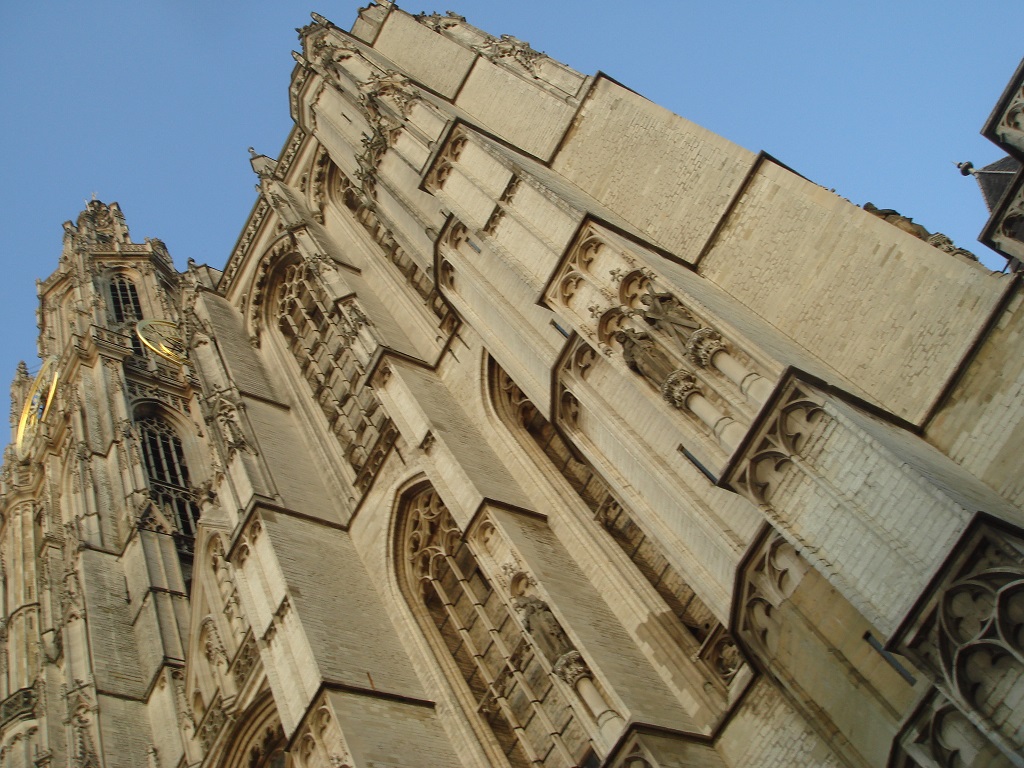[ Trip Overview ] [ Why we did this trip ] [ Egypt ] [ Eclipse day ] [ Libya ]
8 April 2006
It's rather sad to say, but I'm rather glad to be leaving Egypt. Quite in contrast to Libya, Egypt is chaotic and disorganised. The perpetual hassle of being accosted by people who are trying to sell you something is at first fun - but very quickly becomes very stressful and, frankly, a nuisance. I left with the distinct feeling that nearly every person who I met on the street was trying to sell me something - normally at a hideously outrageous price. It was these hard-sell tactics that left a really bad taste.
The culture shock of leaving highly organised Libya where people were nothing short of extremly honest and hospitable to the Egyptian "tourists are walking wallets" attitude could not have been more stark.
While Egypts monuments are nothing short of spectacular and her history long, it will be some years before I return. Perhaps, this will be the hardest sell of all.
7 April 2006
This morning we headed to the Egyptian Museum of Antiquities - which is directly opposite the Hilton Ramses Hotel at which we were staying.
We arrived at the French-style building not long after opening time as the remainder of our group would be leaving for the airport later in the day. Many other groups seem to arrive between 9 and 10am - which made it difficult for us to really look at and examine the exhibits.
The museum is in roughly chronological order on two floors. At the rear of the first floor are the contents of the Tomb of Tutankhamun. There are three coffins on display. The third and innermost coffin is the one in which the mummy was placed. The mummy itself is still in place in Luxor. On the coffins, the King is depicted as Osiris. Under on coffin, which has been placed upon supports, a mirror has been placed which allows you to see the decorated underside of the coffin. "Room 3" is, apparently, always packed and it's worth attempting to come to see King Tuts jewels close to or during the lunch period simple or very early in order to avoid the crowds.
Having been to the Pyramids and other monuments, it was highly useful to come to the Egyptian Museum as it allows one to contextualise the artefacts that are contained here. It would be difficult to imagine the burial coffin of Tut in the Valley of the Kings or the riches in the Pyramids without having seen either first-hand.
6 April 2006
We kicked off our tour of Aswan with a visit to the Temple of Philae. The Temple was relocated to it's current position when its original location was flooded by Lake Nasser, behind the Aswan Dam.
The original location of the temple was thought to the place wehre to the flood started. Each new pharoah would visit the Temple and Philae in order to ensure a succesful flood.
The First Pylon displays two distinct states of preservation. One side is well preserved by silt from the Nile flood, the other side was not. The Temple of Philae is of the Greco-Roman period, which is evidenced by the capitols of the columns. In the Egyptian style, the capitols are all the same - in the Greco-Roman style they are different on each column.
In the Holy of Holies, Horus is making offerings to Isis. Offerings include, the lotus (in two pictures) and the baboon as it symbolizes the giving of his time and that of his people. In each depiction of Isis, Isis is holding the Key of Life, depicting longevity, and papyrus, depicting knowledge.
The temple was active until 527AD when Christians killed the priests, including 385 in one day. The Temple of Trajan shows that the temple of Philae was definativly active during the 2nd Century.
5 April 2006
We stopped at the Greco-Roman temple of Edfu, located on the west bank of the Nile. The temple of Edfu is said to have been built on the location where Horus, the son of Osiris and Isis, killed his uncle Seth in revenge for Seth having killed Osiris.
Later, during the Roman oppression of the Christians the Temple of Edfu was used as a hiding places for Christians of the time. In some areas, the scorched cielings testify to the fires that they lit here. It is thought that the flickering light caused the figures carved into the walls to appear to move. Consequently, the Christians selectivly defaced the figures depicted on the walls. The clothing of the figures and the hieroglyics, on the other hand, remain intact clearly suggesting that the defacement was deliberate and selective.
Parts of the exterior sport a cistern system for the removal of rain-water. This system is pure Greek as there isn't enough rain in Egypt to justify the development of such devices.
4 April 2006
This morning we visited Karnak. While I had been aware of Karnak since I was a boy having seen the Harrison Ford Indiana Jones movies, I wasn't prepared for the size of the place. It was genuinely enormous. The Columns, row after row of column many many meters high with a circumfrence at the base you could wrap a couple of people round. What's amazing is the that these things were built, and erected, without the need for any of the modern machinery we have today. These days a project like this would probably be refused planning permission or a budget or both.
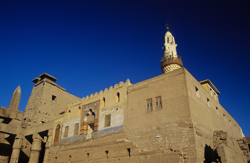 One
of the most striking things about Egypt is how it's history
is rediscovered. This is quite apparent when you enter Karnak.
The picture on the right is taken at Karnak. The pillar you
can see in background on the left side was almost completely
covered. In the wall, you can see the horse-shoe shape entrance
to the mosque. That was at ground level when excavations began.
For those who are interested, that picture was taken at 100mm
on a 28-105mm lens at f8 with a circular polarisor.
One
of the most striking things about Egypt is how it's history
is rediscovered. This is quite apparent when you enter Karnak.
The picture on the right is taken at Karnak. The pillar you
can see in background on the left side was almost completely
covered. In the wall, you can see the horse-shoe shape entrance
to the mosque. That was at ground level when excavations began.
For those who are interested, that picture was taken at 100mm
on a 28-105mm lens at f8 with a circular polarisor.
Following our visit to the mighty Karnak, we headed to the Valley of the Kings (Wadi el-Muluk.)
While the Pyramids at Giza and Saqqara had been looted, the Tombs in the Valley of the Kings we placed here in order for them to less vunerable to grave-robbers. However, they did not remain untouched. Greek writers reported that of 47 known tombs only 17 remained undestroyed.
During our visit, we entered the tomb of Ramses IX (KV6), the tomb of Ramses III (KV11) and the tomb of Ramses IV (KV4).
KV6 has been open since antiquity. Decoration of this tomb included the Books of Caverns, the Open of the Mouth Ritual, the Boof of Earth, the Boof of Day and the Book of Night, the Imy Dwat, the Litany Rite nad the Book of the Dead. Within the burial chamber itself, the vaulted roof has not been smoothed, but has been beautifuly decorated.
KV11 has also been open since antiquity. Of significance here at the two animal-headed pilasters at the entrance. The axis of the corridor to the burial chamber was shifted after a breakthrough to KV10 during construction. Decoration in KV11 includes the Offering of Burial Goods, the King with Gods, the Litany of Ra, the Imy Dwat, the Book of Gales, the Book of Earth, the Book of the Dead and Astronomical Scenes.
In each tomb, the decorations had faded towards the entrance and were more well preserved further inside. We assume that this is primarly due to the sun being able to shine on them.
3 April 2006
With over 300 cruise boats docked and only limited facilties, gaining access to the MSC Tulip involves walking through other cruise ships to which the Tulip was attached. Upto seven boats can be "parked" parallel to each other and have their main deck on the same level and entrance in the same position. Boats leaving involve shuffling the outer boats so the inner ones may depart and parking alongside another boat.
We set sail for Edfu. As we approached the lock at Esna, we heard yelling and general hulla-balloo through our cabin window. Opening the window, we discovered a flotilla of rowing boats - normally with one man rowing and either one or two salesmen. Top deck, now similarly attracted to the side of the boat, was being intensivly courted by the new floating-salesmen. With the slightest interest, a plastic bag with a dress, blouse, shawl, beach towel or other second-hand item would be hurled towards the person expressing interest.
Invariably a process of negotiation - mainly attempting to gain peoples interest and people insisting that they're not - would loudly take place. Lack of interest didn't stop plastic bags being hurled up to the cruisers. Only for the bags to be inevitably hurled back. This process would be repeated several times with several floating-shops and several passengers involved at any one time.
Having been suitably entertained by the chaotic process we decided to retreat into our cabin and mug-up on Edfu, we were would be docking tomorrow morning. Suddenly an object flew threw the window - narrowly missing Mark's head and landing right next to Lorraine on the bed! Perfect targeting! Slightly surprised, Mark picked up the bag, peered out the window and tossed the bag back at the boat right under the cabin window. Peristant insistance of lack of interest was ultimately met with the retort "Why are you not interested? Are you Scottish?"
2 April 2006
Saqqara and the Pyramids of Giza
The Pyramids of Giza are world famous and have been visited, documented and photographed millions of times. Visiting the Pyramids at Giza was the fulfilment of a life-long goal.
At Saqqara, we first visited the tomb of Mena Ruke, a 6th Dynasty non-royal tomb on two levels. A shaft leads down to the actual burial chamber. In ancient Egypt, it was believed that the after-life would be played out just as lie itself. Therefore, the level above ground is built as a house. The pictures on the wall depict scenes from the deceased life, such as people fishing as these will be played out in the afterlife.
After the visit to the tomb of Mena Ruke, we visited the Stepped Pyramid. The Stepped Pyramid was the first pyramid was the first pyramid to bebuilt. Standing at 165 meters in height, it is unique as being the only pyramid having a rectangular base. All the others have square bases. It is not possible to enter the Stepped Pyramid as it may be unsafe for many tourists to enter.
 Following
our brief visit to Saqqara, we headed to Giza. The visit to
Giza would fulfil a childhood ambition to visit the famed Pyramids.
The iconic status of the Pyramids of Giza has raised expectations
to very high levels. While very impressed with the Pyramids,
I somehow felt let down by the spectacle. I think it was the
high expectations I had of them.
Following
our brief visit to Saqqara, we headed to Giza. The visit to
Giza would fulfil a childhood ambition to visit the famed Pyramids.
The iconic status of the Pyramids of Giza has raised expectations
to very high levels. While very impressed with the Pyramids,
I somehow felt let down by the spectacle. I think it was the
high expectations I had of them.
For the price of 20 Egyptian Pounds it is possible to enter the Second Pyramid. We crouched down to proceed through down the slope of the hot and humid shaft. Somewhere in the middle of the shaft, it became level and we were able to stand upright once more before crouching once more to complete the final ascent to the burial chamber. The burial chamber itself was much larger than I had expected. The size, dehumifidier as well as the two ventilation shafts helped to keep the burial chamber cooler and less oppressive than the shafts leading to it.
Memphis
 Memphis
was a bit of a disappointment really. There's not much of the
city left. The major attraction for us here was the enormous
statue of Ramses II. The statue is currently presented lying
flat on it's back protected by the building it's currently
in. The statue is best viewed from the balcony that allows
you to view it from all angles.
Memphis
was a bit of a disappointment really. There's not much of the
city left. The major attraction for us here was the enormous
statue of Ramses II. The statue is currently presented lying
flat on it's back protected by the building it's currently
in. The statue is best viewed from the balcony that allows
you to view it from all angles.
There is also a decent sized sphinx here with 4 meters tall by 8 meters long. The sphinx is thought to be from the 19th Dynasty.
Entrance 25LE, Camera with stand 20LE.
1 April 2006
Our first stop today was at the Catacombs of Alexandria.
Pompeiis Pillar is made from pink granite from Aswan. The pillar sports Roman style capitols. Pompeiis Pillar is so called as Pompeii opposed Caesar as Emperor. On Caesers accession, Pompeii fled to Alexandria. When the people of Alexandria decided not to risk the wrath of Rome, Pompeii was killed and his hand sent to Caesar as proof of his death. Caesar had Alexandria set alight as in order to divert attention from the Roman fleet. The Roman fleet proceeded to defeat Alexandria's powerful Greek fleet and the Roman conquest of Alexandria was completed.
We quickly drove through El-Tahir Square to the Citadel. After a brief stop to be accosted by vendors and for pictures we headed to the library. Unfortunately, when we arrived at the Alexandria Bilblioteque, it was closed to visitors. It's has a beautifully designed modern exterior and currently contains five million manuscripts. Plans are afoot to expand the library to over 30 million manuscripts, although this is expected to take many years. The library also contains a planetarium and an Internet cafe.
31 March 2006
We left Masra Matrough early for Alexandria.
En route we stopped at El-Alamein War Museum. The small museum has is divided into Italian, German, Egyptian and British rooms. The first room as you enter displays an overview of the theatre of combat.
In the cemetery, over 6,000 Commonwealth troops are buried. There are also cemeteries for the German and Italian troops. The graveyard is well tended and a fitting monument to the fallen.
30 March 2006
Today is our last day in Libya. While I look forward to Egypt and her ancient treasures, I will miss Libya. Prior to organising this trip, it had not occurred to many of us to visit Libya. We didn't know what to expect.
During our times in Tripoli and Tobruk, which afforded some interaction with the locals, we found the Libyans to be at all times courteous, warm and honest to a fault. It is my sincere hope that, should tourism take off in Libya, that they do not lose these qualities. Courtesy, warmth and honesty are what I shall remember the Libyan people for.
Looking forward, visiting Egypt will fulfill a child-hood ambition to visit the pyramids and the High Dam as Aswan. In this regard, I am very excited at being able to visit Egypt at last.
After three hours at the border, which involved several bureaucratic nightmares of immigration control and customs checks, we proceeded to our Beau Site Hotel at Masra Matrough.
